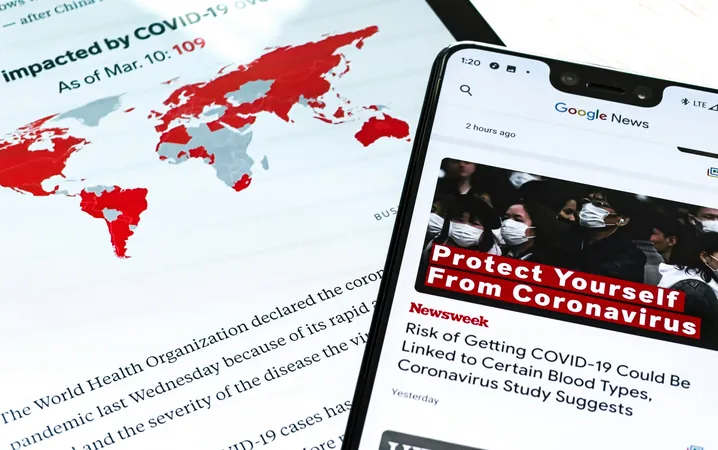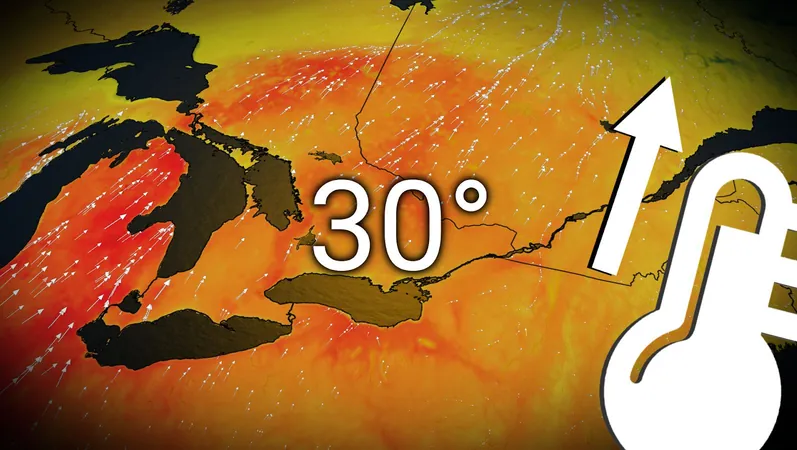
The Science of Communication: How Researchers are Revolutionizing Environmental Health Messaging
2024-11-04
Author: Noah
In the world of science, conveying research with clarity and responsibility can often feel like navigating a minefield. At Michigan State University, a groundbreaking initiative led by researcher Kevin Elliott aims to tackle this issue head-on, focusing on enhancing how environmental health scientists communicate their findings to the public.
"Words matter, and misleading information is rampant in our society," asserts Elliott, a professor at MSU's Lyman Briggs College and the College of Agriculture and Natural Resources. With the growing prevalence of misinformation, he emphasizes the need for scientists to adopt a more nuanced and intentional approach to their messages.
Elliott and his research team explored a variety of strategies to communicate the effects of endocrine-disrupting chemicals (EDCs)—substances linked to hormonal imbalances that can negatively impact sexual development, neurodevelopment, and obesity. They examined four distinct communication methods:
1. Focusing on challenges to masculinity 2. Using the term "neurodivergence" 3. Discussing the developmental origins of health and disease in relation to obesity 4. Classifying obesity as a disease
Their findings were published in the esteemed journal *Environmental Health Perspectives*, revealing that while certain messages might be factually sound, they could carry unforeseen consequences. For instance, labeling obesity as a disease could facilitate access to weight-loss treatments for many individuals, yet it may simultaneously perpetuate stigma and misinterpretations about the complexities of health.
The research suggests that discussing the risks of fetal exposure to pollutants in relation to obesity could help reduce stigma. However, inadvertently, this could also place undue pressure on expectant mothers to shield their unborn children from environmental hazards.
Elliott explains, "Environmental health scientists are faced with various trade-offs as they strive to share accurate information. Our aim is to provide valuable, actionable insights while minimizing the risk of misinterpretation or misuse."
To aid in this endeavor, Elliott recommends several strategic approaches that scientists can adopt to enhance their communication: - Prioritize clarity and simplicity: Clearer language can prevent misunderstandings and ensure the message is accessible to a broader audience. - Foster community engagement: Direct dialogue with communities affected by environmental issues can provide relevant insights and help tailor messages to be more impactful. - Educate the public about scientific processes: Creating a better understanding of how science works can reduce skepticism and empower individuals to make informed choices.
As scientists like Elliott work to refine their communication methods, the potential for improving public understanding of critical environmental health issues has never been more critical. By bridging the gap between complex scientific research and everyday language, researchers are paving the way for a more informed society capable of tackling pressing health challenges. Stay tuned as this story unfolds—your health may depend on it!









 Brasil (PT)
Brasil (PT)
 Canada (EN)
Canada (EN)
 Chile (ES)
Chile (ES)
 Česko (CS)
Česko (CS)
 대한민국 (KO)
대한민국 (KO)
 España (ES)
España (ES)
 France (FR)
France (FR)
 Hong Kong (EN)
Hong Kong (EN)
 Italia (IT)
Italia (IT)
 日本 (JA)
日本 (JA)
 Magyarország (HU)
Magyarország (HU)
 Norge (NO)
Norge (NO)
 Polska (PL)
Polska (PL)
 Schweiz (DE)
Schweiz (DE)
 Singapore (EN)
Singapore (EN)
 Sverige (SV)
Sverige (SV)
 Suomi (FI)
Suomi (FI)
 Türkiye (TR)
Türkiye (TR)
 الإمارات العربية المتحدة (AR)
الإمارات العربية المتحدة (AR)